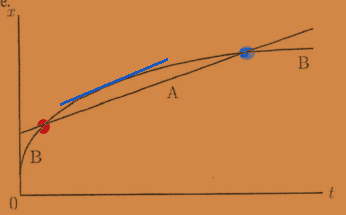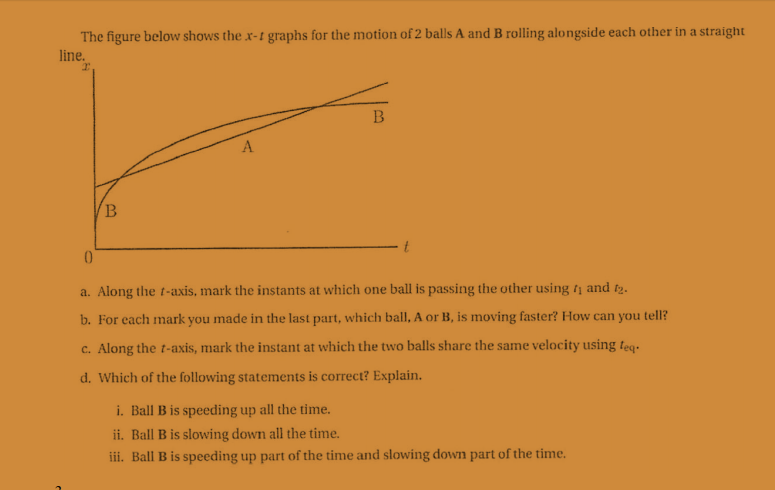The speed of a particle is given by the slope of the x vs t curve - the steeper the curve, the more the position changes for the same change in time.

b) At the intersection marked in red, B's x−t graph is steeper, so B is moving faster. At the other intersection, marked blue - A is moving faster.
c) Somewhere in between these two times the tangent to B's x−t curve is parallel to A's (the blue straight line in the figure above) - this is when they share a common velocity. That there is such a point is a consequence of what is called the means value theorem of calculus.
d) The slope of B's x−t curve is easily seen to decrease over time - option (ii) is the correct one.



